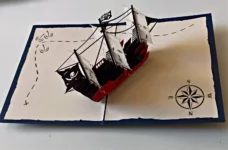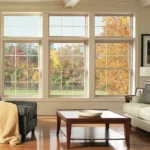The Middle East has been and continues to be one of the most lucrative regions in the world for 3D printing. Application of 3D printing continues to be rampant in the Middle East, owing to the region’s robust healthcare infrastructure. Cost-effective and precise production of dental and surgical implants necessitates the adoption of 3D printers. Moreover, hospitals and other medical organizations in the Middle East are actively using 3D printing technologies to increase the region’s inbound medical tourism. The demand for 3D printing materials in the Middle East is also increasing due to brimming consumption of consumer electronics and wearable accessories. Also, advanced 3D printers being used by the Middle East’s food & beverage makers have been successfully able to include chocolate as an edible material for 3D printing.
A recent study conducted by Future Market Insights projects that the 3D printing materials market in the Middle East will expand at more than 15% CAGR in terms of value by the end of 2025. This means that every US$ 10 worth of 3D printing material sold in the Middle East today will be valued at more than US$ 40 over the next ten years.
Now that 3D printing is well-rooted in the Middle East, companies supplying 3D printing materials are at all times ready to explore all options. Since it’s too early to define the limits of 3D printing in the world, almost every other material can be consider as a viable option to run some basic tests. Researchers and scientists from all round the world are extending their knowledge on 3D printing materials, and concurrently, experimenting with new materials to test their applicability in three-dimensional printing.
3D graphene is one such newly-developed material that is slated to proliferate the global 3D printing industry. Researchers at the Massachusetts Institute of Technology (MIT) are nearing the development of 3D graphene, anticipating that the atomic structure of this newly-developed material will offer far more enhanced functions than 2D graphene. Although, scaling this nanomaterial has been regarded as the key challenge faced during commercial-scale procurement of 3D graphene. In order to have better electrical conductivity than copper or to be a dozen-times stronger than steel, 3D graphene must be produced through a cost-effective yet suitable method. The end-result of this research is expected to yield a 3D graphene that will be lighter than copper or steel, more electrically-conducive and equally stronger to replace these materials in 3D printing applications.
It has also been reported that few other MIT researchers are aiming at developing a self-transforming 3D printing material. Considering how 3D graphene will be highly beneficial for the construction industry in the Middle East, a “shape-shifting” 3D printing material will open doors to a vast variety of applications in the region. First and foremost, the Middle Eastern consumer goods industry will be revolutionized by the advent of such auto-transforming 3D printing material. The alleged material will bear a key property of transforming into other shapes even after being printed. Most importantly, this group of experts from MIT are also developing a 3D printing technique that will induce such “transforming” property into every 3D printing material existing in the world. Additive manufacturing in the Middle East is one of the key industry that will benefit from a steadfast implementation of such innovative 3D printing method.
The insights presented in this article are based on a recent report by Future Market Insights. The excerpts of the report can be browsed at http://www.futuremarketinsights.com/reports/sample/rep-eu-1345
Author: Abhishek Budholiya is a tech blogger, digital marketing pro, and has contributed to numerous tech magazines. Currently, as a technology and digital branding consultant with Future Market Insights, he offers his analysis on the tech market research landscape. His forte is analysing the commercial viability of a new breakthrough, a trait you can see in his writing. When he is not ruminating about the tech world, he can be found playing table tennis or hanging out with his friends.








